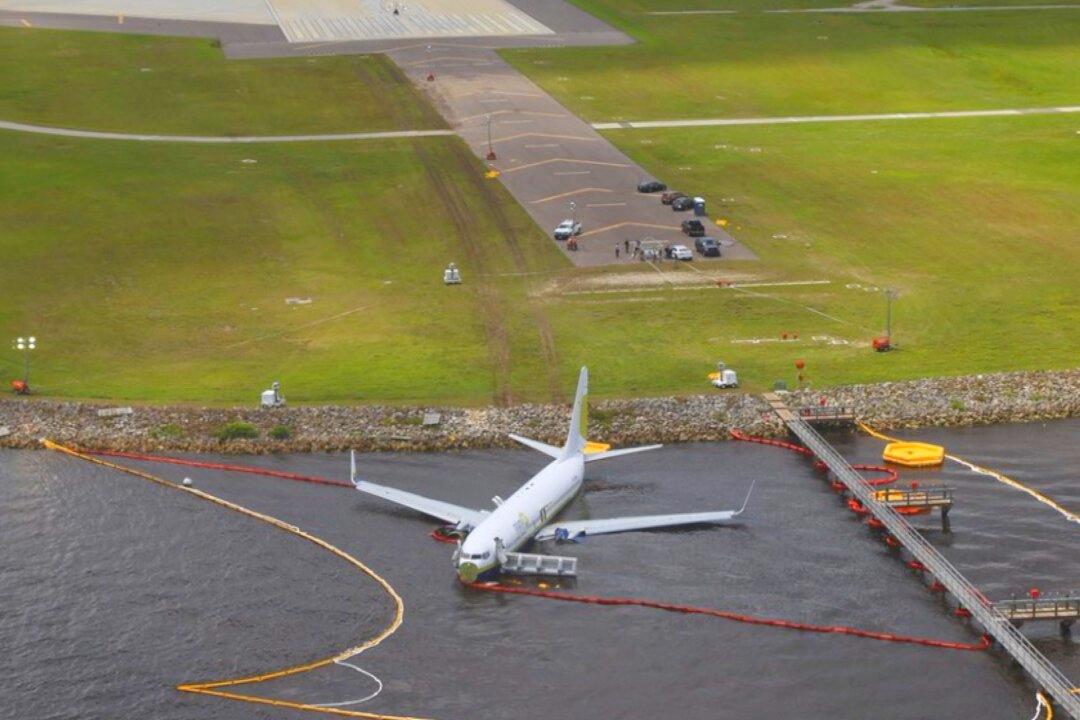A component meant to slow an aircraft on landing was inoperative on the Boeing jetliner that slid off a runway into a river at a Florida military base, injuring 22 people, investigators said on Sunday, May 5.
The failure of the left-hand “thrust reverser” on the Boeing 737-800 was one of the factors investigators were looking at, as well as a request by the pilots to change runways, said National Transportation Safety Board Vice Chairman Bruce Landsberg.





